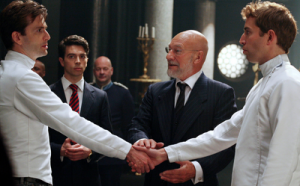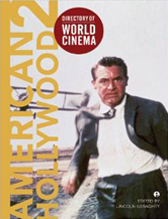
REVIEW: Hamlet
Filmic productions of theatrical performances have an unfortunate tendency to be, as the Bard might put it, ‘a little more than kin, and less than kind’. Often shot with static or spatially distant cinematography, weakened by conflicting performance styles, or overly lengthy, the transition from stage to screen is not always harmonious.
 Gregory Doran’s adaptation of The Royal Shakespeare Company’s 2008 production of Hamlet however is largely a successful one, due in part to its carefully considered simplicity. Unlike the grandiose stylings of Kenneth Branagh’s 1996 version, Doran has opted for a refined minimalist presentation – sparse sets characterised by few props and polished interiors.
Gregory Doran’s adaptation of The Royal Shakespeare Company’s 2008 production of Hamlet however is largely a successful one, due in part to its carefully considered simplicity. Unlike the grandiose stylings of Kenneth Branagh’s 1996 version, Doran has opted for a refined minimalist presentation – sparse sets characterised by few props and polished interiors.
And yet while the production design is theatrical in nature, Doran directs the camera in a manner more typical of television (cutting between mid-shots and occasionally moving in close) to capture the nuances of the performances and the play’s theme of madness. In particular, the emphasis on reflective surfaces throughout the work, such as fractured mirrors, provides Doran with a suitable motif to signify the splintering psyches of Hamlet’s various characters (Hamlet, Ophelia, Gertrude, Claudius etc).
The only flaw within the otherwise discreet production design is the occasional employment of cheap looking visual affectations – CCTV and home movie camera footage – perhaps in an attempt to impose a heightened filmic sensibility upon proceedings. And yet, while such imagery may reinforce the element of surveillance, their clumsy and intrusive execution is more disruptive than innovative.
 With few exceptions, the performances too are generally strong. Despite the whisperings of criticism for his manic characterisation of Hamlet (a tendency some have likened to his role as Doctor Who) David Tennant is well cast in the lead. Whatever baggage his Timelord persona hath burdened him with, Tennant’s youthful appearance and erratic mannerisms are entirely appropriate to the impetuous Danish Prince.
With few exceptions, the performances too are generally strong. Despite the whisperings of criticism for his manic characterisation of Hamlet (a tendency some have likened to his role as Doctor Who) David Tennant is well cast in the lead. Whatever baggage his Timelord persona hath burdened him with, Tennant’s youthful appearance and erratic mannerisms are entirely appropriate to the impetuous Danish Prince.
More tellingly though, Tennant’s perfectly restrained rendition of the iconic ‘To be or not to be’ soliloquy ranks amongst the most convincing captured on screen. Shot predominantly in close-up as Hamlet ruminates on life and death, Tennant brings to the words a wonderfully understated melancholic quality.
It’s arguably Tennant’s skill (and that of his fellow cast members Patrick Stewart, Penny Downie and Mariah Gale) in traversing the darkly comic and tragic aspects of Shakespeare’s text that ultimately elevates Doran’s from the mass of earlier adaptations. Minor gripes notwithstanding (the concluding acts feel somewhat rushed and the finale veers toward the anti-climactic), this version of Hamlet seems principally immune to the common stage-to-screen curse.





RSS feed for comments on this post. TrackBack URI